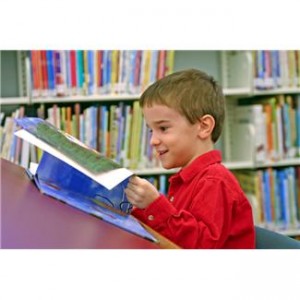It’s considered universal common knowledge: kids learn languages easily. This truth appears to be self-evident; most of us struggle to learn a second or third language as adults, while recalling little such struggle learning our first one as kids. Watching kids in action, they sometimes seem to pick it up so effortlessly. But increasingly, the people who study language are saying that truism is actually a myth, and they’re creating better language programs for kids by leaving that assumption by the wayside.
To understand why, it’s important to look at the reality of how slowly – and awkwardly – kids learn language. The average child can take months, even a year of sing-alongs and Sesame Street to pick up the alphabet and counting past ten. These are things that most adults can learn in just a couple days of formal instruction. And often, the reason that kids seems to learn languages so quickly isn’t because they’re better at it, but because we’re comparing apples to oranges. For example, children are immersed in their first language, hearing it spoken everywhere around them at all times, whereas most teen or adult learners start in a classroom hearing it just for a few hours a week.
Linguists do have a good sense of how exactly children master their first language – and the good news is adults still have the same ability. According to the prevailing theory, humans are born with a “universal grammar” – that is, a genetic and hardwired ability to fit sounds into a language structure as concepts. Humans have evolved this ability over time and it’s one of our crowning characteristics.
The real challenge for children (or anyone) then is not so much learning language as it is figuring out which sounds are a part of the language and which aren’t. Children go through a process of learning by doing, which starts as early as being in the womb where they can hear the sentence patterns and tones used by their mothers when they speak. Throughout their young years they continue to learn which sounds have meaning, and try out strange words and sentences– baby talk, and the cute things toddlers say. But only the constructions that have meaning to others get more than a laugh, and by trial and error they end up speaking the same way as the people around them.
What does this mean for language programs for kids? It means a heavier emphasis on immersion or exposure, and a positive encouraging environment that rewards trial and error, will be most effective. And for adults it means that you’re no worse than you ever were at learning a language – if you can just set aside the fear of criticism and risk saying things that might be wrong.

kids are fast at learning – source
Jake Alexander is a free lane writer who enjoys blogging about education and learning. Follow him @JakeAlexander17.
